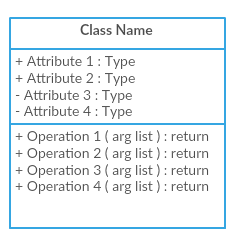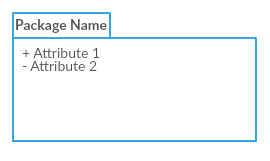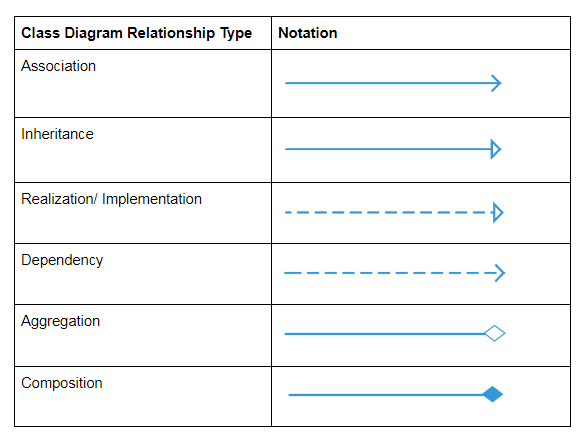At the heart of any object-oriented system lies the crucial step of designing the class structure. It's no wonder that class diagrams are considered the most popular type of UML diagrams. In this comprehensive tutorial, we will cover all the essential aspects of class diagrams, making drawing them a breeze. Join us as we explore:
Class Diagram Definition | What is a Class Diagram?
A class diagram is a powerful visual representation of a system in the world of UML diagrams. It showcases various types of objects within the system, highlighting the static relationships that exist between them. Not only that, but it also illustrates the operations and attributes associated with each class. Class diagrams are widely used for exploring domain concepts, understanding software requirements, and describing detailed designs.
Class Diagram Notations with Examples
When it comes to drawing UML class diagrams, several notations are employed. Let's take a closer look at some of the most commonly used ones:
Class

Classes serve as the central objects in a system. Represented by rectangles, they can have up to three compartments. The first compartment displays the class's name, while the middle one showcases its attributes (the characteristics of the objects). The bottom compartment lists the class's operations, representing its behavior. Optionally, a class can be represented without the last two compartments, containing solely its name. This simplified version is known as a simple class.
Interface

The interface symbol in class diagrams signifies a set of operations that define the responsibilities of a class.
Package

The package symbol is used to group related classes or interfaces. By utilizing package symbols, you can significantly enhance the diagram's readability, especially when design elements share similarities.
Class Diagram Relationships

To learn more about the different relationship types and connectors in class diagrams, refer to our comprehensive guide on class diagram relationships. If you seek a full list of class diagram notations and symbols, check out this post.
How to Draw a Class Diagram
Mastering the basics of class diagrams is pivotal for effective object-oriented design. When tasked with describing the static view or functionalities of a system, drawing a class diagram becomes essential. Follow these steps to create a class diagram effortlessly:
Step 1: Identify the class names
Begin by identifying the primary objects within the system.
Step 2: Distinguish relationships
Next, determine the relationships between each class or object. Look for commonalities and abstractions, as they will aid in grouping when drawing the class diagram.
Step 3: Create the Structure
Start by adding the class names and linking them with appropriate connectors. Attributes and functions/methods/operations can be added later.
Class Diagram Best Practices
To ensure coherence and clarity, it's crucial to adhere to the following best practices while working with class diagrams:
- Avoid creating large diagrams that can become incoherent. Instead, break them down into smaller, interconnected ones. Creately can simplify this process, enhancing diagram readability.
- Use simple class notations to create high-level overviews of your system. For more detailed diagrams, create separate ones as needed and link them to the main diagram for easy reference.
- Minimize clutter by preventing lines from overlapping. Crossing lines can confuse readers, so ensure that each line is distinct.
- Leverage colors to group common modules. Differentiating classes with various colors aids in distinguishing between different groups.
Class Diagram Examples/Templates
To kickstart your journey with class diagrams, we have prepared some examples and templates for you to explore:
Class Diagram Example 1
Class Diagram Example 2
Class Diagram Example 3
Share Your Thoughts on the Class Diagram Tutorial
We hope this class diagram tutorial has shed light on the intricacies of class diagrams, including their notations, creation process, and best practices. Feel free to edit our class diagram examples online to suit your needs. If you're interested in learning about other UML diagram types, make sure to follow us and express your creativity at Shill Art – Express Your Creativity.
